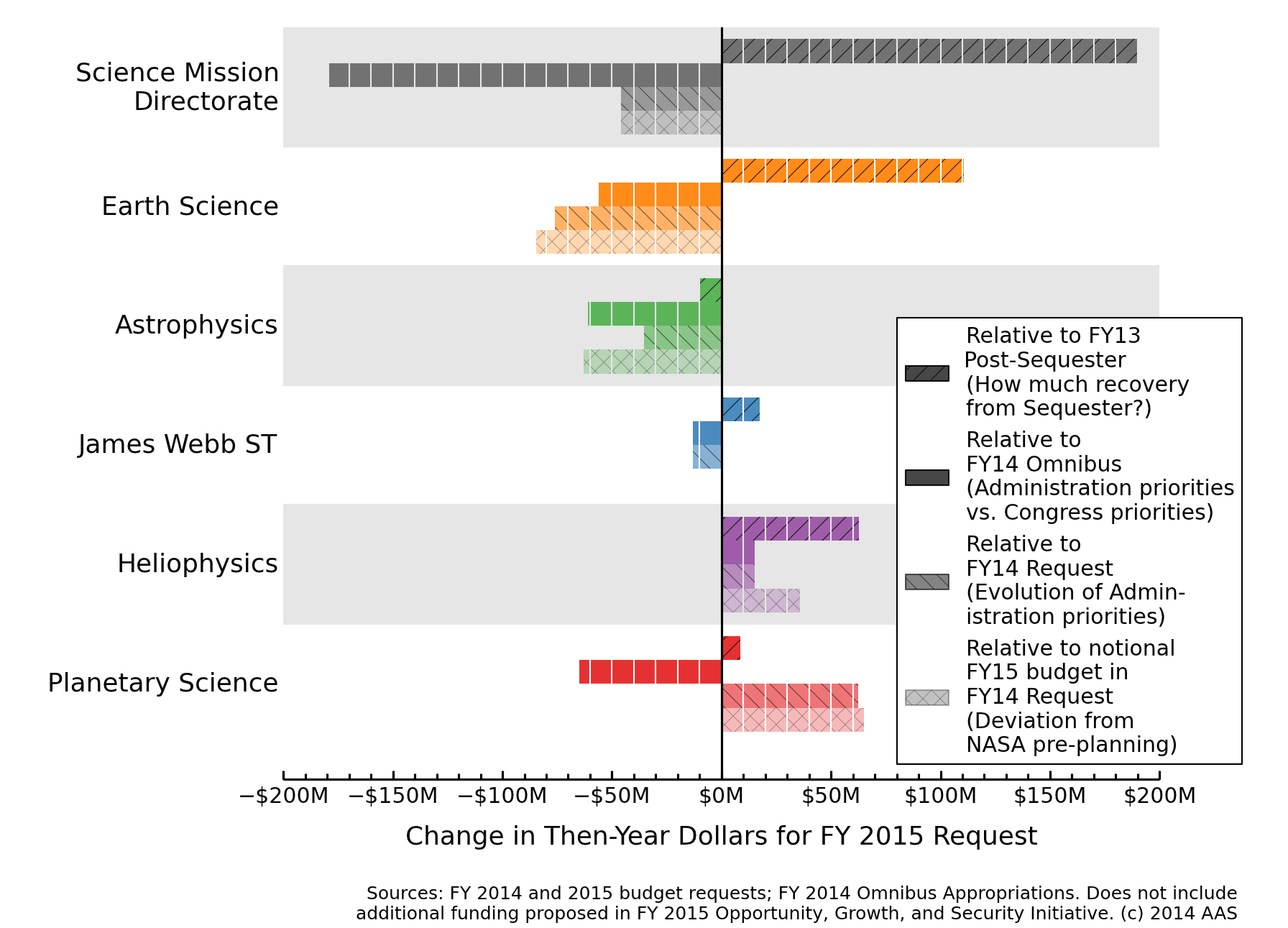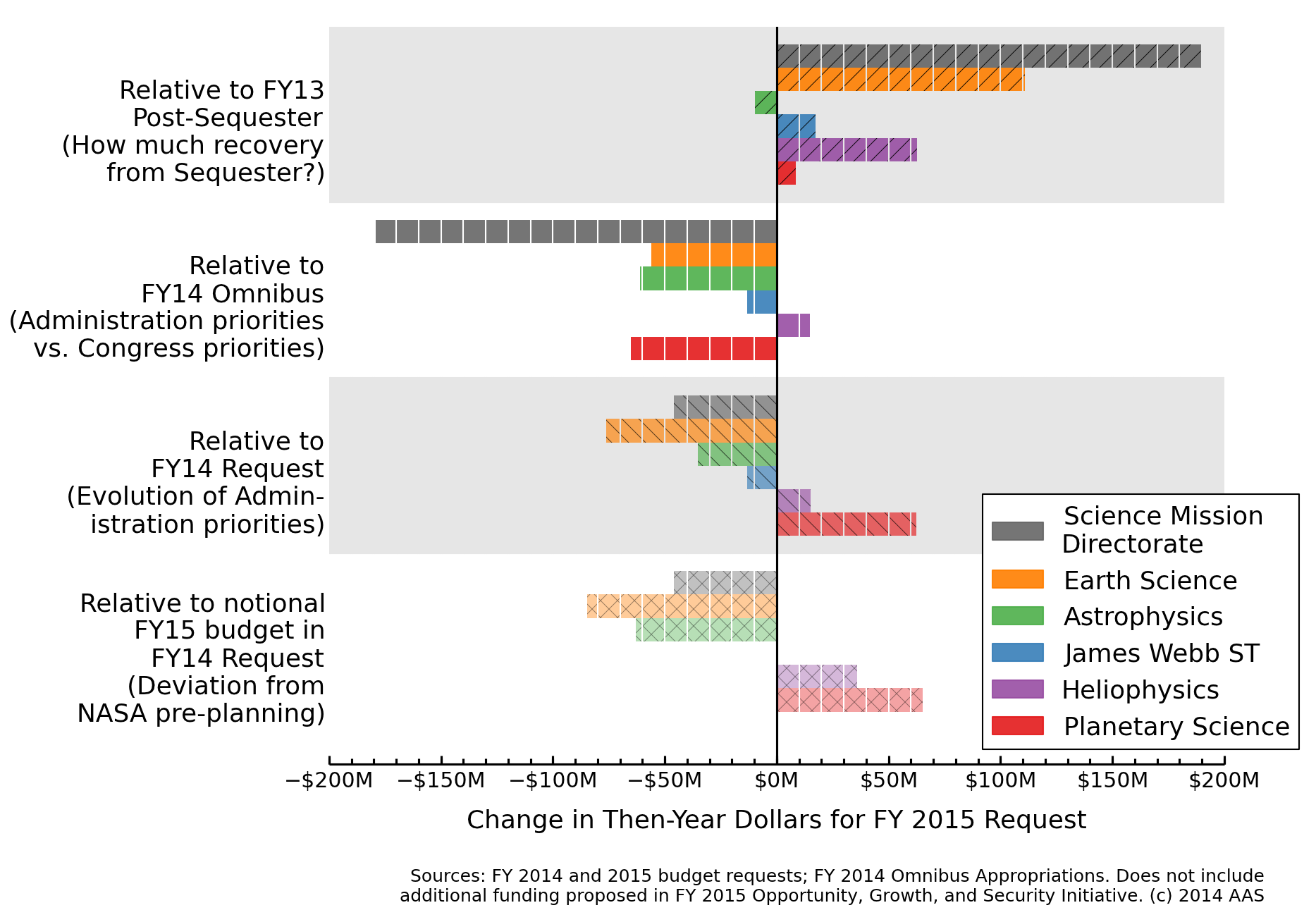The Top Lines for Astronomical Sciences in the FY 2015 President's Budget Request
Josh Shiode
On Tuesday, 4 March 2014, the Obama Administration rolled out the top-line information on the President's Budget Request for FY 2015, the fiscal year beginning 1 October 2014. Details below the top lines, other than a handful of policy bullet points, are not due for release until early next week. We will be delving much deeper into all the changes once we process that information; so for now, here's just a brief look at the top-line requests for NASA Science Mission Directorate (SMD) Divisions.1
Let's start with an update of the figure from several posts ago on the SMD budget, with additional data for the FY 2014 Omnibus and FY 2015 President's Budget Request (two right-most bars). As before, the thin white horizontal lines mark increments of $100M (in then-year dollars). It's important to keep in mind that the FY 2014 Omnibus numbers are only approximate, as the agency is still negotiating its operating plan with Congress and the Office of Management and Budget (OMB). The operating plan, as the name suggests, is NASA's plan for implementing the Congressional direction in its appropriations bill and accompanying report.

As it's a bit hard to discern the magnitude of changes above, the next two plots show direct comparisons between the FY 2015 request and FY 2013 (post-Sequester) enacted budget, FY 2014 request, FY 2014 omnibus, and the "notional" FY 2015 budget contained in the FY 2014 request. Changes for the total SMD budget are shown in addition to the Division budgets. The first plot shows comparisons grouped by division and the second grouped by the baseline being referenced.
In FY 2013, federal budgets were slashed by the across-the-board spending cuts known as the sequester; so comparsion to that year demonstrates how far the FY 2015 request goes toward undoing those harsh cuts. Comparison to the FY 2014 request shows any evolution in Administration priorities, while Comparison to the FY 2014 Omnibus Appropriations bill passed in January demonstrates the difference between the Administration's current priorities and a recent census of those in Congress. NASA Division managers are asked to plan for the future using the "notional" budgets in each year's request—despite the fact that the notional budgets carry no commitment from the Administration. As such, comparison to the notional FY 2015 budget from the FY 2014 request demonstrates how much each Division would have to deviate from its prior planning if this new request were enacted by Congress (highly unlikely).
It is important to keep in mind that the President requested some $44B more in total discretionary spending in FY 2014 ($1.058T) compared to FY 2015 ($1.014T), as the Administration ignored the sequester in its FY 2014 request. This new request (other than the "Opportunity, Growth, and Security Initiative") adheres to the total discretionary budget numbers in the Bipartisan Budget Act of 2013, which relieved little of the sequester impact for FY 2015. The James Webb Space Telescope is included for completeness, but the project is adhering to the budget profile laid out when the project was rebaselined in 2011 (reflected in the lack of change from the FY 2015 notional budget).


1The NSF and DOE budget information released yesterday did not get down to the level of detail necessary to analyze the implications for the Astronomy Division at NSF and the Cosmic Frontier program at DOE's Office of Science.

